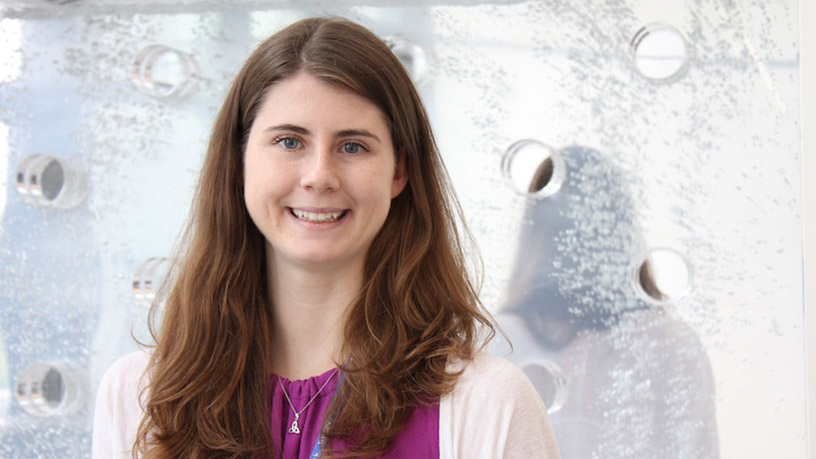From the heart
Brynne Yarranton knows a thing or two about grit.
“Persistence is huge. When you have a goal, the only way to get there is by putting the work in,” says the fourth-year undergraduate and varsity athlete. Yarranton, who is majoring in biological sciences, has also played on Team Canada’s under-19 women’s lacrosse team.
Yarranton is well on her way to achieving her goals. A native of Toronto, she attends the University of Vermont on an athletic scholarship. Last summer, she and her teammates on Canada’s junior women’s lacrosse team made history at the world championship in Edinburgh, Scotland, besting their American rivals in a dramatic 9–8 victory to take the world title.
This summer she is spending more time off the field. She was awarded a studentship through the D+H Summer Student Research Program at Sunnybrook Research Institute (SRI). Her supervisor is Dr. Harindra Wijeysundera, a clinician-scientist at SRI whose research is focused on health technology assessments. Yarranton is helping to develop a care plan following a procedure called transcatheter aortic valve implantation, or TAVI.
It is a treatment for aortic valve stenosis, where the aortic heart valve doesn’t open properly, which restricts blood flow to the rest of the body. The condition affects more than 100,000 Canadians. In Canada, TAVI, a minimally invasive procedure, is only offered to patients for whom open-heart surgery is high risk. During the procedure, interventional cardiologists such as Wijeysundera insert a long, flexible catheter into a blood vessel and use it to implant a new valve.
“The valves are quite expensive, so the thought is, if you can reduce the time in hospital and make care more efficient—reducing complications and re-admissions—then the overall economics [of TAVI] will be cheaper, and hopefully they’ll be able to [treat] more patients [with it],” says Yarranton.
She is analyzing data from forms filled out by nurses caring for patients after they have had TAVI. These forms contain steps for post-procedural care, called a “pathway,” which includes administration of medicine, patient education and rehabilitation services such as physiotherapy. She is calculating completion rates of the pathway forms by nurses, as well as compiling survey responses from nurses about what they found helpful about the pathway and how the process can be improved. The aim is to devise a plan that optimizes recovery and allows patients to be discharged from hospital sooner, toward improving outcomes and the cost-effectiveness of TAVI, which costs about $35,000.
“We’re revising the pathway to make it simpler and more efficient for the nurses because they’re busy, and providing care is their first priority rather than going through and checking off this [form]. The goal is to have patients discharged within two days,” says Yarranton.
She says the studentship has opened her eyes to how health services research shapes patient care. “A lot of the [research] that goes on behind the scenes is so important and I didn’t realize that until I had this job. As a patient, you don’t necessarily consider all the work that’s gone in prior to the direct care you’re receiving from your physician,” she says.
As a pre-med student Yarranton says she hadn’t considered a career in research, but that observing Wijeysundera manage—and enjoy—his duties as a clinician-scientist has made her rethink her options.
“He works extremely hard to balance both, but seeing the impact of the research he’s done, and how it directly relates to his work with patients has made me see that it’s very beneficial,” she says. “That he’s so passionate about what he does has made me reconsider the doubts I had about doing both.”
Brynne Yarranton received a D+H SRI Summer Studentship Award.






